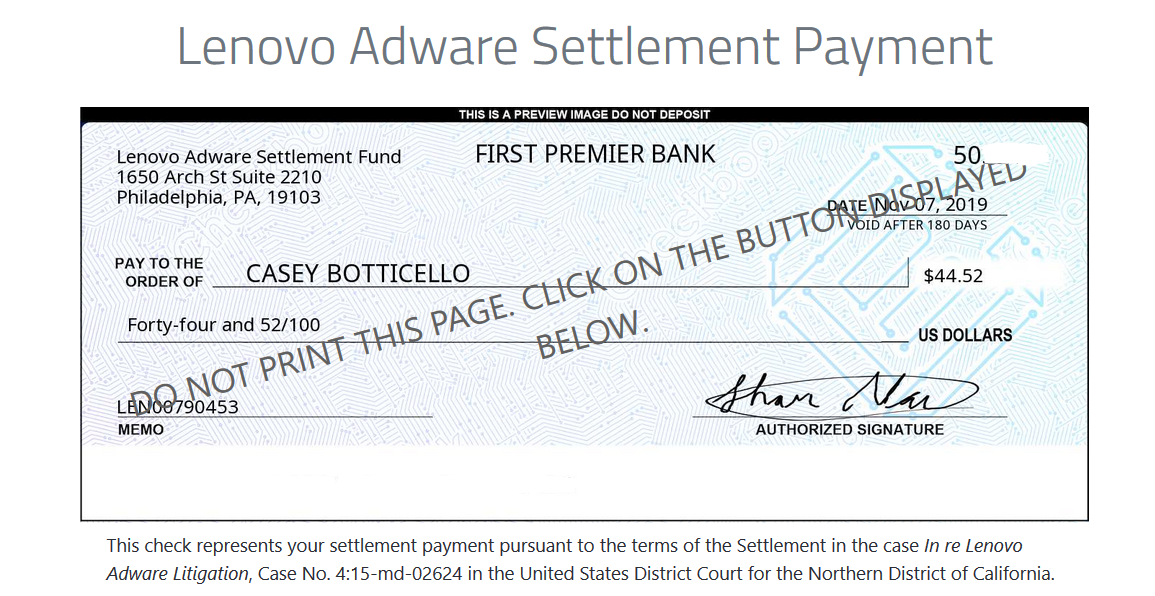

Incompatible Standards of Conduct/Limited Funds (Rule 23(b)(1)).Federal Rule of Civil Procedure 23(b)-Additional Requirements for Various Types of Class Actions.Adequate Representation (Rule 23(a)(4)).Federal Rule of Civil Procedure 23(a)-Mandatory Class Prerequisites.Protecting Defendants from Inconsistent Adjudications.The report concludes by identifying ways in which Congress could modify the legal framework governing class actions if it were so inclined, with a particular focus on a bill currently pending in the 115th Congress that would effectuate a variety of changes to the class action system. The report then discusses Rule 23’s restrictions on the parties’ ability to settle a certified class action. An Appendix to the report also contains a reference chart that graphically illustrates those prerequisites for class certification. The report also discusses the prerequisites that a class action must satisfy before a court may “certify” it-that is, before a federal court may allow a case to proceed as a class action. It begins by discussing the purpose of class actions, as well as the risks class actions may pose to defendants, class members, and society at large. This report serves as a primer on class action litigation in the federal courts. For similar reasons, Rule 23 also subjects proposed class action settlements to the scrutiny of the federal courts.
CLASS ACTIO. LAWS SERIES
In an attempt to balance the benefits of class actions against the risks to defendants and class members, Federal Rule of Civil Procedure 23 establishes a rigorous series of prerequisites that a federal class action must satisfy. Moreover, because the class members generally do not actively participate in a class action lawsuit, class actions pose a risk that the class representative and his counsel will not always act in accordance with the class members’ best interests. At the same time, however, class actions can occasionally subject defendants to costly or abusive litigation. In a class action, a plaintiff (known as the “class representative,” the “named representative,” or the “named plaintiff”) may sue the defendant not only on his own behalf, but also on behalf of other entities (the “class members”) who are similarly situated to the class representative in order to resolve any legal or factual questions that are common to the entire class.Ĭourts and commentators have recognized that class actions can serve several beneficial purposes, including economizing litigation and incentivizing plaintiffs to pursue socially desirable lawsuits. The proposed measures would enhance court oversight over the distribution of class action proceeds and establish a rebuttable presumption that a return to the general members of a class action litigation funding scheme of less than 70 percent of their gross proceeds is not fair and reasonable. The proposed measures would also require plaintiffs to consent to become members to a class action litigation funding scheme before funders can impose their fees or commission on them.Ĭonsultation on the exposure draft of these proposed measures follows the Government’s earlier consultation on Recommendation 20 of the PJC’s report, on the design elements of a guaranteed statutory minimum return of class action proceeds to class members.A class action is a procedure by which a large group of entities (known as a “class”) may challenge a defendant’s allegedly unlawful conduct in a single lawsuit, rather than through numerous, separate suits initiated by individual plaintiffs.


If progressed, the proposed measures would respond to key recommendations made by the Parliamentary Joint Committee on Corporations and Financial Services in its report on litigation funding and the regulation of the class action industry, including recommendations 7, 11, 12, 13 and 16. The Government is seeking stakeholder views on exposure draft legislation to promote a fair and reasonable distribution of class action proceeds in proceedings involving third party litigation funders.


 0 kommentar(er)
0 kommentar(er)
